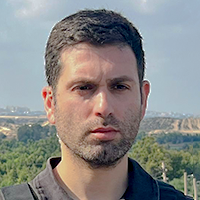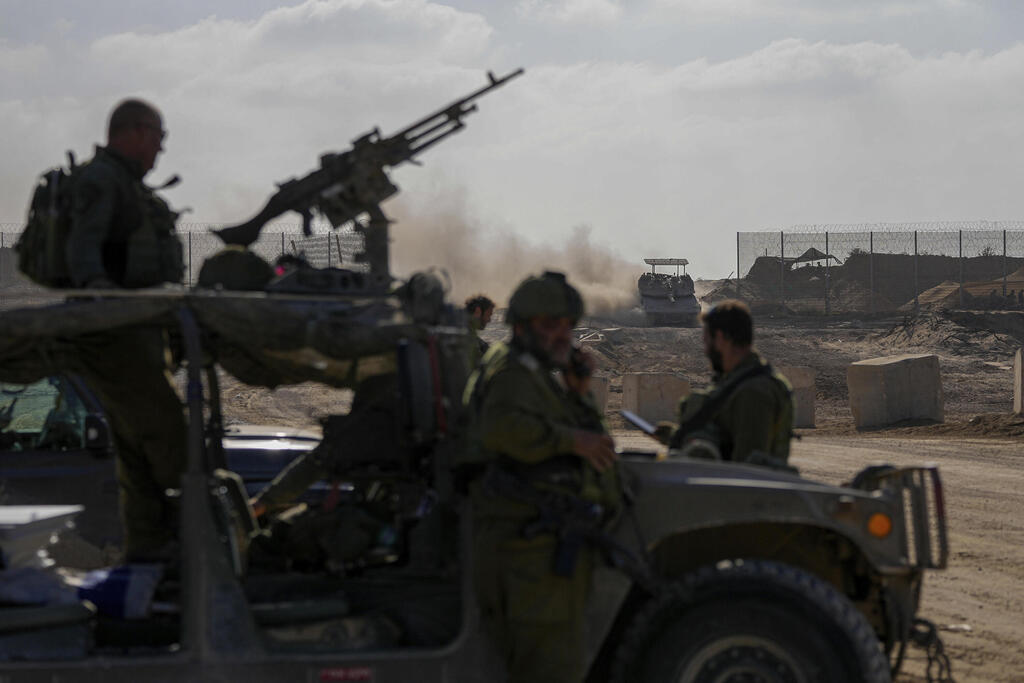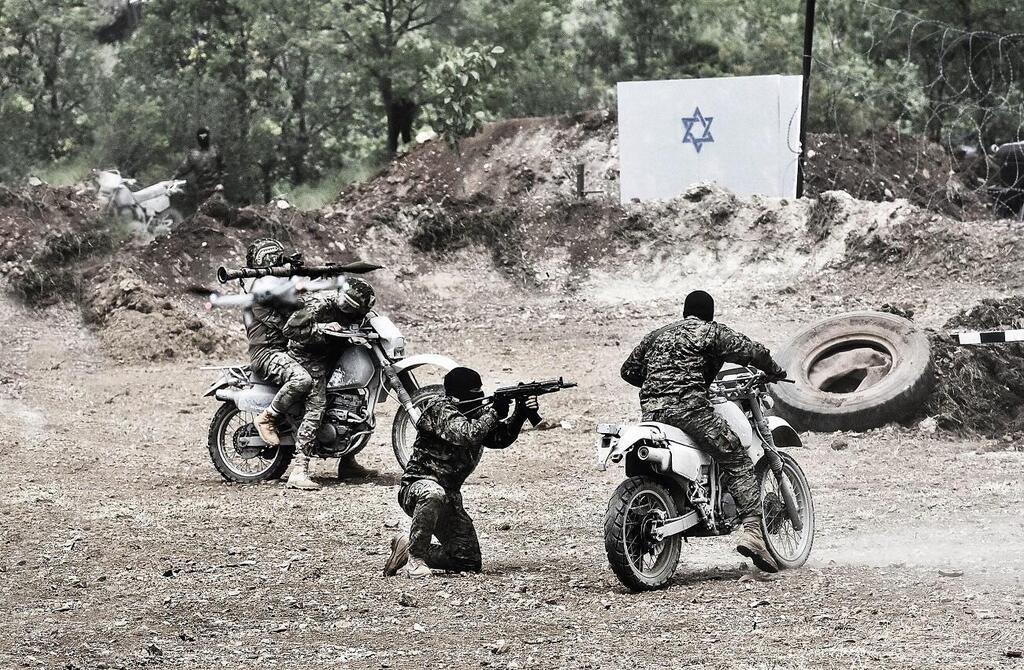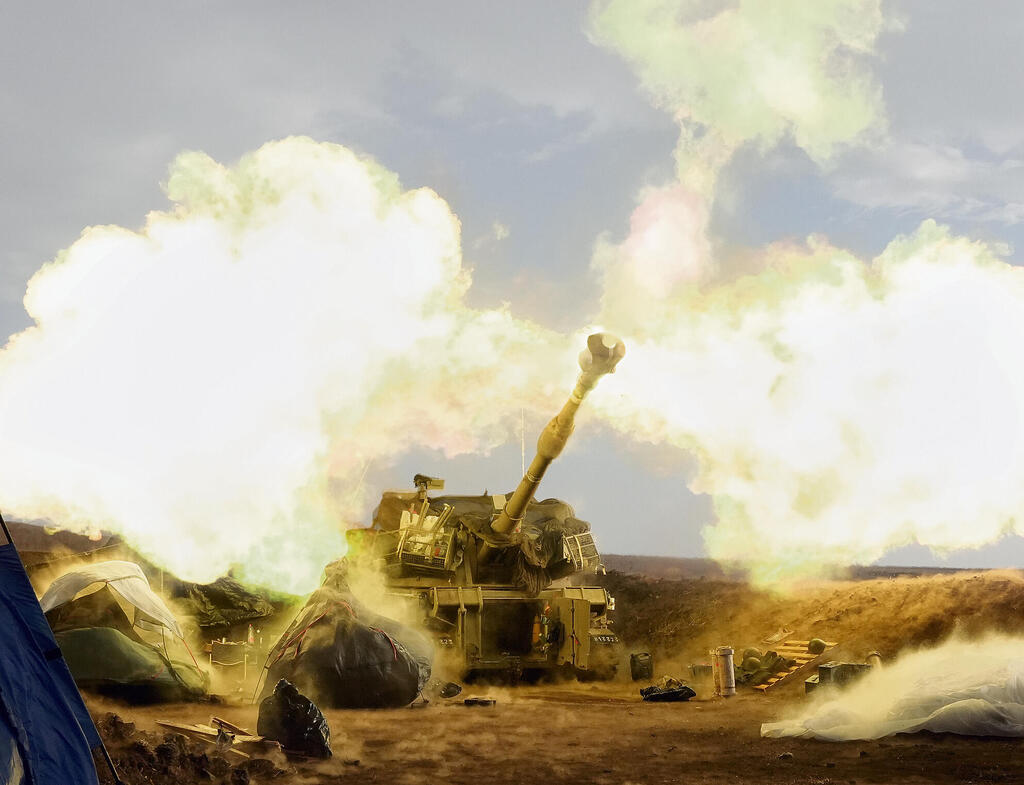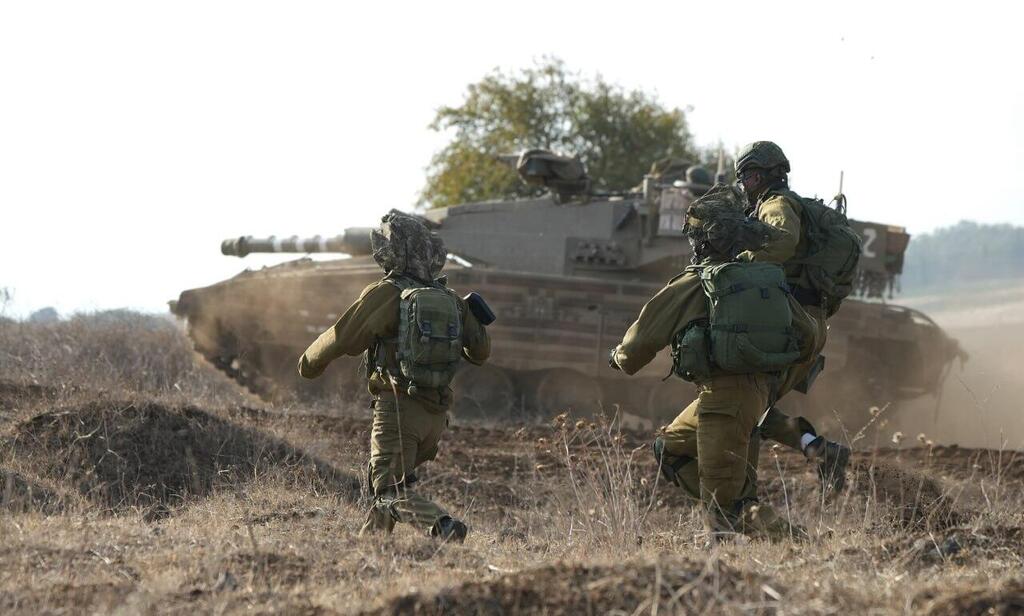After the conclusion of the cease-fire in Gaza Friday morning, which lasted a week and during which 105 hostages were released, the military is preparing to resume ground operations on both sides of the border and both fronts. The IDF attacked about 200 targets across the Gaza Strip, while barrages were launched from there toward central Israel and border communities.
Read more:
- While negotiations with the terrorist organization are still ongoing in Qatar for reinstating the truce in exchange for the release of more captives soon, the IDF has completed preparations to resume its ground offensive.
Last week, the IDF twice announced that IDF Chief of Staff Lt. Gen. Herzi Halevi approved plans to resume ground combat in the coastal enclave. These plans included Brig. Gen. Dan Goldfuss, commander of the distinguished 98th Paratroopers Division, who has yet to be activated on the division level.
The division units, like the 35th Paratrooper Brigade and 89th Commando Brigade, have been operational since the start of the war, but not on the division level. It can be assumed that Brig. Gen. Goldfuss' units, the best in the ground forces, will be deployed in complex missions within densely populated civilian areas.
However, the work in the northern Gaza Strip is not yet complete. Hamas is regrouping in locales where the IDF has already operated and tailed forces at least three times during the cease-fire in incidents like in Beit Hanoun and Sheikh Radwan neighborhoods. The toughest nuts to crack in the northern Gaza Strip remain in areas close to the border with Israel – the city of Jabalia and Gaza City's Tuffah and Shuja'iyya neighborhoods.
Over the years, Hamas has anticipated that the IDF would adopt a direct combat strategy, first storming Palestinian urban areas near the border. This approach was evident during 2014's Operation Protective Edge, where the army focused primarily on neutralizing 30 cross-border tunnels.
Israeli airstrikes in Khan Yunis, southern Gaza Strip
The trauma of the invasion of Shuja'iyya and the deadly attack on a Golani Brigade armored personnel carrier (APC) there still runs deep for both sides since then. Therefore, Hamas concentrated its strongest battalions in these strongholds, opposite the border with Israel, where the foot of an IDF soldier has not yet stepped in this war, except in the encirclement of Jabalia.
This week, alarming footage emerged from Shuja'iyya and nearby areas, showing Hamas' military wing gunmen handing over some hostages to the Red Cross in broad daylight.
Weapons flowing into Gaza from Sinai
Another issue that the IDF will have to address comes from the southern Gaza Strip, which constitutes about 70% of its geographical area: the Philadelphi Route, which delineates Egypt, Israel and Gaza, stretching from Kerem Shalom to Rafah – a large and divided city in its own right.
A large Hamas brigade is concentrated in Rafah and it is controlled by crime families that have made their fortune from smuggling from Sinai. This front is a challenge in itself, one that the IDF is still far from addressing.
During the war, a surprising revelation emerged: thousands of weapons, remnants from the Syrian civil war, which were used by the Nukhba forces in their murderous incursion into Israel on October 7, entered the Gaza Strip via the border with Sinai.
5 View gallery
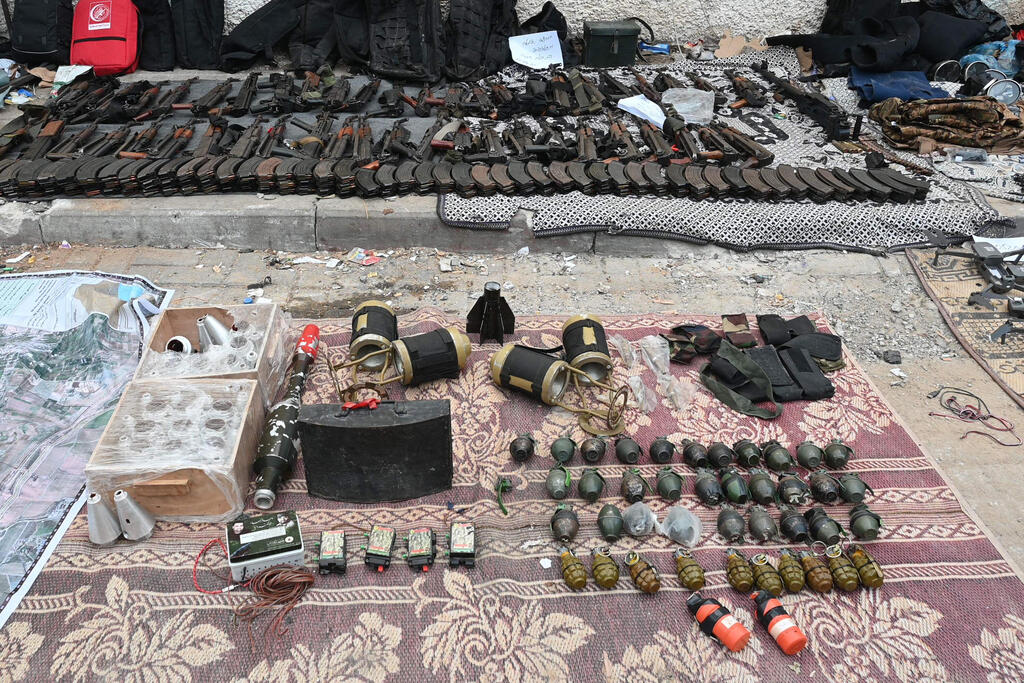

Hamas arms uncovered by Israeli forces at Gaza's Al Shifa Hospital
(Photo: Ahikam SERI / AFP)
These weren't smuggled through the tunnels that the IDF believed the Egyptian army had destroyed, nor secretly, nor by sea - but rather on trucks crossing the Rafah crossing, loaded with crates of ammunition, numerous anti-tank missiles, abundant machine guns and weapons recently used in Iraq and Syria. All this happened while the IDF, according to foreign media reports, has been investing in the past decade in precise, surgical strikes in Syria to hinder Hezbollah's military buildup.
The IDF used the cease-fire for more than just logistical preparation and drawing up further combat plans; it also took the opportunity to rotate a significant portion of its forces.
Regular soldiers fighting in the Gaza Strip were permitted to visit rear bases in southern Israel to reunite with their parents, though they were not allowed to return home. Commanders were required to hold numerous discussions with soldiers last week to address the psychological challenges arising from the reduced combat stress.
The mandatory processing of combat experiences during the cease-fire, including exposure to distressing sights, viewing videos and staying informed about public opinion, are factors that contributed to this drop in tension.
What is Hezbollah up to?
In the northern front, recently overshadowed in public discourse, there's been a significant development: an informal cease-fire, mirroring the one in Gaza, has been breached in several instances. During these incidents, interceptors were fired at targets believed to be hostile, some of which turned out to be unfortunate birds mistaken for drones flying from southern Lebanon to the Galilee region.
There has been a tacit agreement on an informal cease-fire between the sides, yet Hezbollah has taken advantage of this period of calm to replenish its arsenal in the border region and fortify its military positions near key flashpoints.
In several instances, trucks loaded with a variety of weapons, predominantly rockets, have been observed supplying Hezbollah's elite Radwan units, designated for incursions into Israel, along the border.
Presently, it is believed that Hezbollah has not yet fully moved its Radwan units to southern Lebanon. Facing Israel, Hezbollah currently has only a few thousand Radwan operatives, with the IDF having eliminated roughly 100 of them. This situation suggests that Hezbollah is adhering to a strategy of limited engagement with Israel rather than escalating to an all-out war, even post-ceasefire.
The IDF has lately implemented stricter rules of engagement in the north and refrained from initiating strikes in the past week, a contrast to the actions of the previous month. Alongside several regular brigades, predominantly from the Kfir Brigade and the Armored Corps equipped with Merkava Mark 4 tanks featuring Trophy protection systems, the majority of soldiers stationed in regional brigades tasked with securing the Galilee Division area since the war's onset are reservists.
None of these soldiers knows when they will return to their civilian lives and reunite with their families. In contrast, the main force in the Gaza Strip operations consists predominantly of young, regular soldiers from elite brigades, with the exception of the 252nd Brigade.
The IDF plans to maintain operations to ensure that the northern front remains a secondary focus, despite the fact that the adversary there poses the greatest threat to Israel, while Gaza continues to be the primary front.
Similar to the situation on the Gaza border, it's believed that Hezbollah has offensive tunnels on the Lebanese side, akin to those the IDF destroyed in Operation Northern Shield in January 2019. The Northern Command considers an incursion through these tunnels, or a direct amphibious assault, as tangible threats. Last year, the Northern Command conducted three exercises for rapid force deployment in response to hypothetical invasions by Radwan units, along with smaller drills involving elite units.
To date, Hezbollah has launched over 1,000 various rockets and numerous anti-tank missiles toward the border area, predominantly targeting IDF outposts. The longer-range attacks on the cities of Kiryat Shmona and Nahariya have been attributed to Hamas' branch in southern Lebanon. According to international reports, several senior members of this group were eliminated by the IDF near Tyre last month.
While the Cabinet is yet to determine a course of action against Hezbollah and a strategy to regain the confidence of the hundreds of thousands of residents near the northern border, enabling their safe return and resettlement, the military has conveyed to the political leadership that "a successful defensive engagement, like the one achieved by the army last month, does not determine the outcome of wars."
In the meantime, the IDF is addressing one of its most complex challenges against Hezbollah: the challenge of detecting attack drones and subsequently issuing timely warnings to both military forces and civilians in the area. In the past month, Hezbollah has successfully detonated armed drones at least four times, resulting in injuries to soldiers.
Over the past week, the IDF has implemented new and advanced technological measures intended to enhance the detection of small, slow, low-altitude aircraft, which are typically difficult to detect. This improvement in detection capabilities has led to an increase in false alarms in the north, a trend that might continue with the potential escalation of hostilities in this region.



